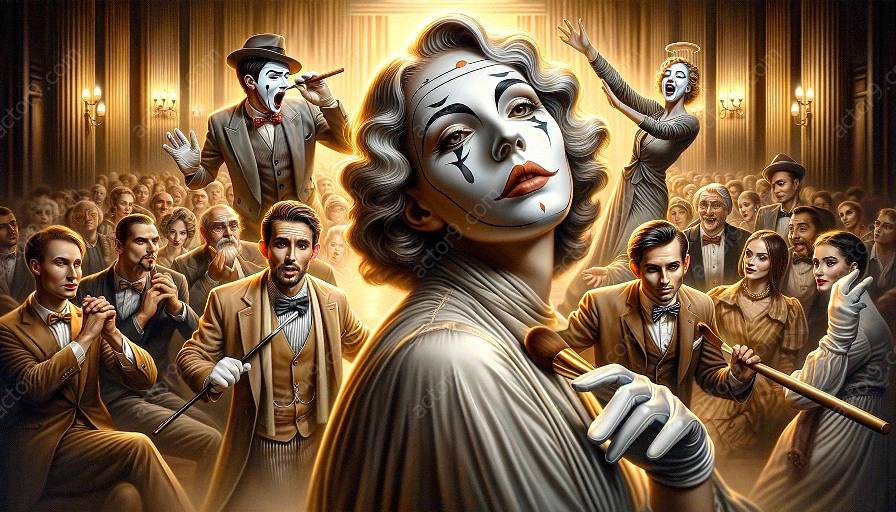Mime, with its unique blend of physicality, expressiveness, and storytelling, has a rich historical heritage that spans various regions around the world. From ancient Greece to modern-day performances, mime and physical comedy have evolved and influenced famous artists across the globe.
Ancient Roots of Mime
The roots of mime can be traced back to ancient civilizations where non-verbal communication played a significant role in ritualistic, theatrical, and entertainment contexts. In ancient Greece, mime was intertwined with religious ceremonies and dramatic performances, shaping the foundation of physical storytelling and expression.
Asian Influences
Across Asia, traditional performing arts such as Chinese opera, Japanese Noh theater, and Indian dance forms incorporate elements of mime and physical comedy. These diverse cultural influences have contributed to the development of nuanced and expressive movement-based storytelling.
European Mime Tradition
The European tradition of mime flourished during the medieval and renaissance periods, with commedia dell'arte in Italy being a prominent influence. This form of improvisational theater employed physical humor and exaggerated gestures, setting the stage for the emergence of modern mime techniques.
Rise of Mime in 20th Century
During the 20th century, mime experienced a resurgence with the pioneering work of renowned artists such as Marcel Marceau, Étienne Decroux, and Charlie Chaplin. Their innovative contributions to mime and physical comedy expanded the boundaries of non-verbal expression and performance art, leaving a lasting impact on the art form.
Contemporary Mime and Physical Comedy
Today, the legacy of historical mime traditions persists in contemporary performances, with artists like Bill Irwin, David Shiner, and Akira Kasai pushing the boundaries of physical comedy and mime. Their works continue to redefine the art form, incorporating influences from global traditions and modern storytelling.
Conclusion
The historical origins of mime in various regions around the world have shaped its evolution into a dynamic art form that transcends cultural boundaries. Its intersection with famous mime artists and physical comedians throughout history underscores the enduring impact of mime and physical comedy on the world stage.


























